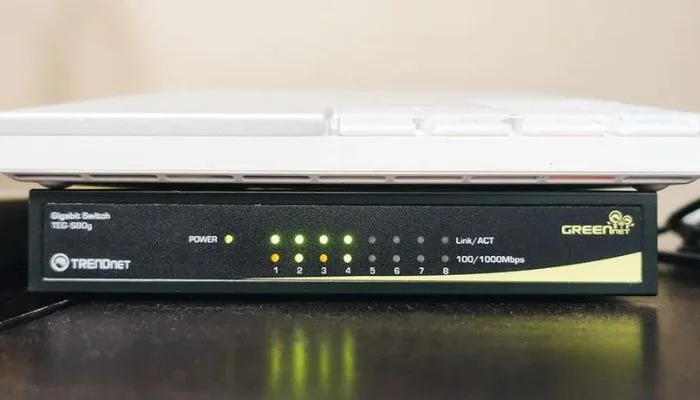The main difference between Hub and Router is that a hub is a simple device that links devices together in a network, but it doesn’t have the ability to decide how to route data between networks, like the Internet. A router, on the other hand, does more than just connect devices; it also decides how to route data between networks. Routers are necessary for managing networks, keeping them safe, and sending data quickly.
What is a Hub?

When it comes to networking, a hub is a device that allows multiple devices to connect and communicate with each other. It acts as a central point for data transmission, receiving data from one device and broadcasting it to all connected devices. In simple terms, a hub is like a traffic intersection where all the connected devices share the same network.
How Does a Hub Work?
A hub operates at the physical layer of the network, which means it simply forwards the data it receives to all connected devices without any intelligence or decision-making capabilities. This leads to a significant drawback of hubs – they suffer from collisions and congestion when multiple devices try to transmit data simultaneously. As a result, the overall network performance can be severely affected.
Learn more about What is a Hub and how it works
When to Use a Hub
Hubs are suitable for small, local networks where simple connectivity is required, and network traffic is minimal. They are cost-effective but lack advanced features.
What is a Router?

A router, on the other hand, is a more advanced networking device that not only connects multiple devices but also provides intelligent routing capabilities. Unlike a hub, a router operates at the network layer of the OSI model and makes decisions about the best path for data transmission.
How Does a Router Work?
A router uses a routing table to determine the most efficient path for data transmission. It analyzes the destination IP address of incoming data packets and forwards them to the appropriate destination based on the information in its routing table. This enables routers to direct data traffic efficiently, minimizing collisions and congestion.
Learn more about What is a Router and what is it
When to Use a Router
Routers are ideal for larger networks that require efficient data routing, internet connectivity, and enhanced security. They are the go-to choice for home networks, businesses, and data centers.
Key Differences: Hub vs Router
A hub is a simple device that serves as a central point of connectivity for various devices. It operates at the network’s physical layer and simply broadcasts incoming data packets to all connected devices. This means that regardless of whether the data is intended for them or not, all devices connected to a hub receive the same data. As a result, a hub can quickly become overburdened, causing network slowdowns.
A router, on the other hand, is a smarter device that works at the network layer. It not only links several devices but also serves as a gateway between various networks. A router examines incoming data packets to identify the most efficient path for them to take to their destination. This results in improved network performance and security.
A hub is a simple device that broadcasts data to all connected devices, whereas a router is a more sophisticated device that intelligently routes data packets between networks. A hub may serve if you need a quick way to connect devices to a network. A router, on the other hand, is the way to go if you need superior network performance and security.
- Data Transmission: A hub broadcasts data to all connected devices, while a router selectively forwards data based on destination IP addresses.
- Network Layer: A hub operates at the physical layer, while a router operates at the network layer of the OSI model.
- Intelligent Routing: A hub has no intelligence or decision-making capabilities, while a router uses a routing table to make intelligent routing decisions.
- Network Performance: Due to collisions and congestion, hubs can lead to slower network performance. Routers, on the other hand, optimize data traffic and improve network performance.
Difference between hub and router in tabular form
| Aspect | Hub | Router |
|---|---|---|
| Layer of Operation | Layer 1 (Physical Layer) | Layer 3 (Network Layer) |
| Function | Connects devices within a network, broadcasting data to all connected devices. | Connects different networks, directing data packets based on logical addressing. |
| Network Type | Typically used in local area networks (LANs). | Used to connect various networks, including LANs and the internet. |
| Data Handling | Broadcasts data to all connected devices, causing network congestion. | Efficiently routes data packets only to the intended recipient, reducing network traffic. |
| Scalability | Not scalable for larger networks due to limited functionality. | Scalable and suitable for larger, more complex networks. |
| Security | Lacks security features, as all connected devices can see each other’s data. | Offers security features like firewalls and network address translation (NAT) to protect network traffic. |
In summary, while both hubs and routers are used in networking, they serve different purposes. Hubs are simple devices that allow multiple devices to connect and share a network, but they lack intelligence and can lead to network congestion. Routers, on the other hand, provide intelligent routing capabilities, optimize data traffic, and improve network performance. Understanding the difference between a hub and a router is essential for anyone looking to set up or troubleshoot a network.

